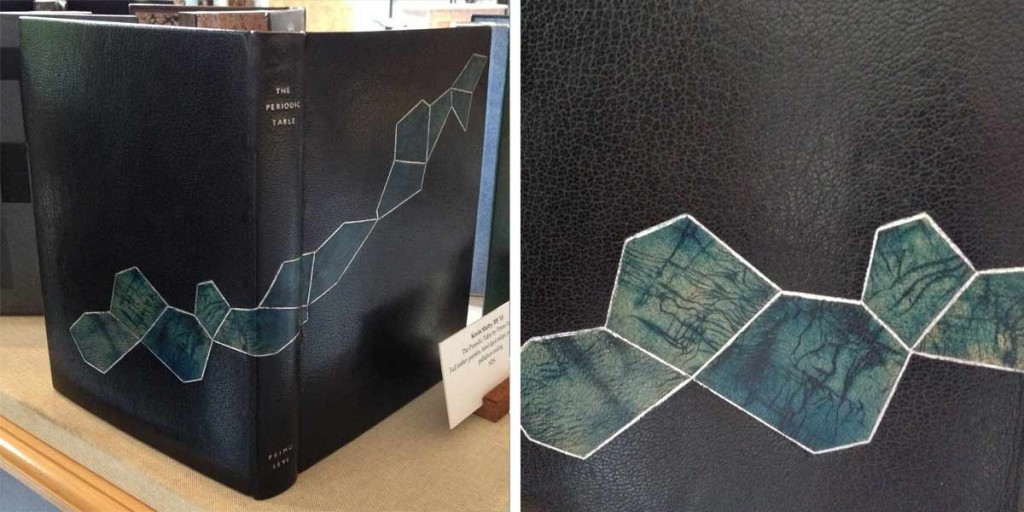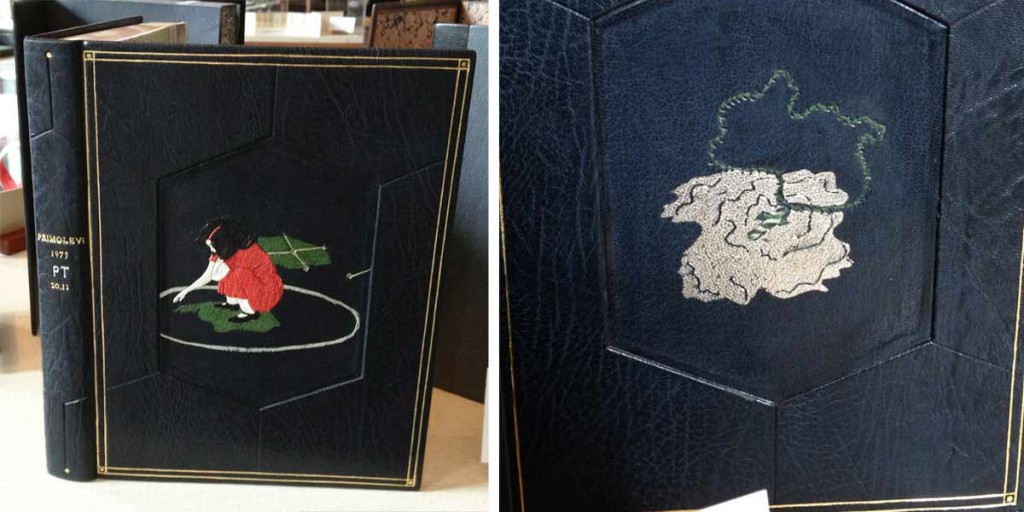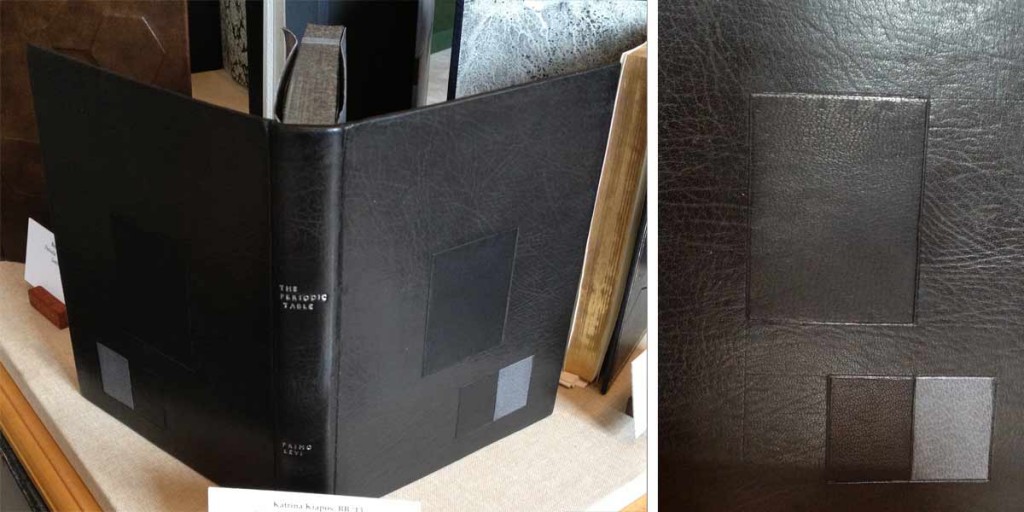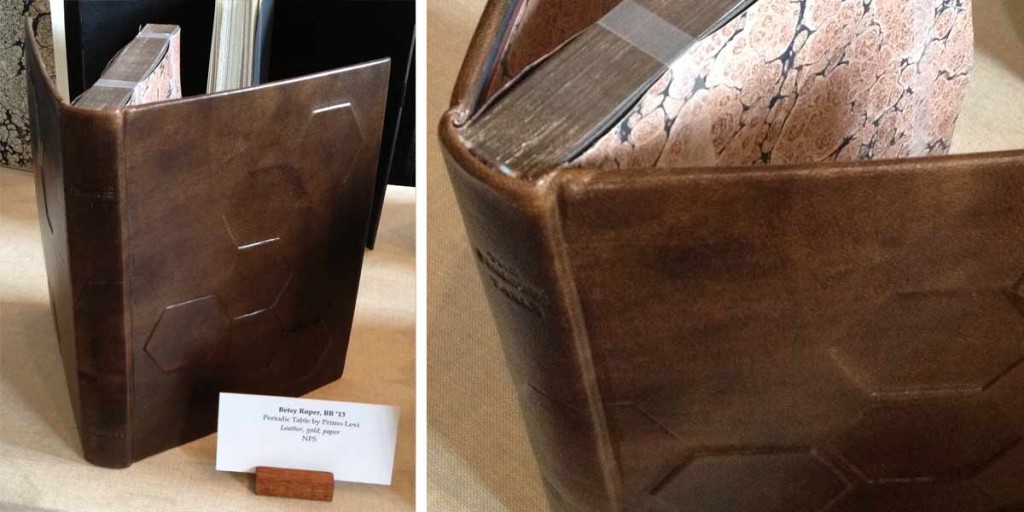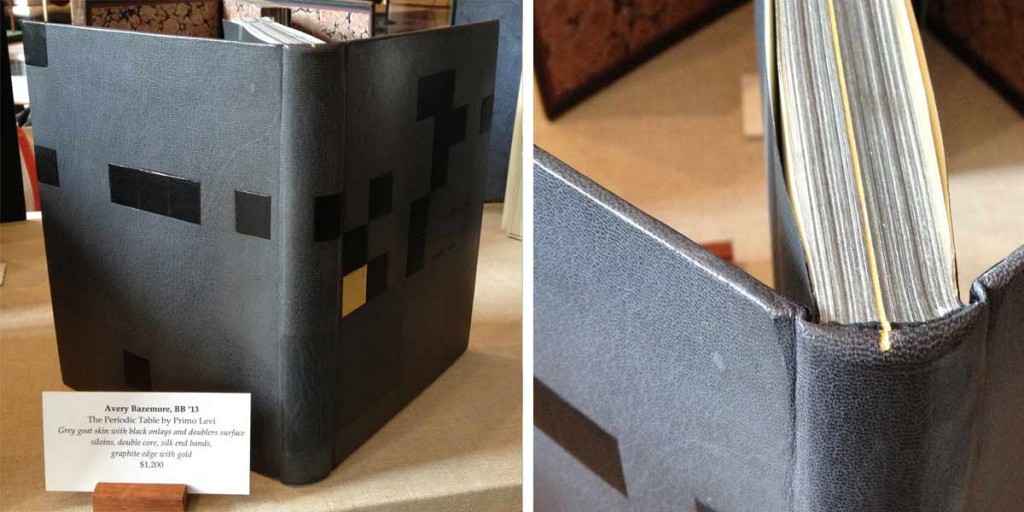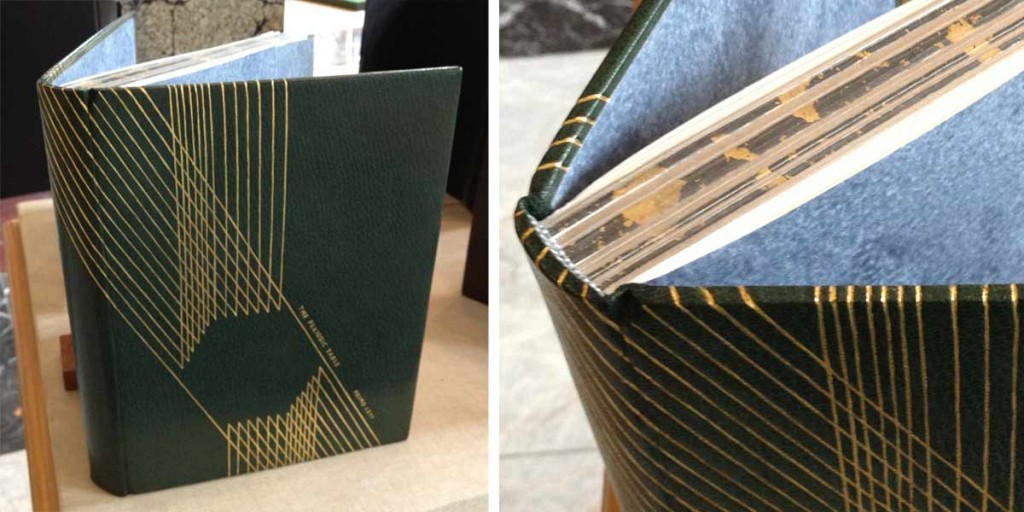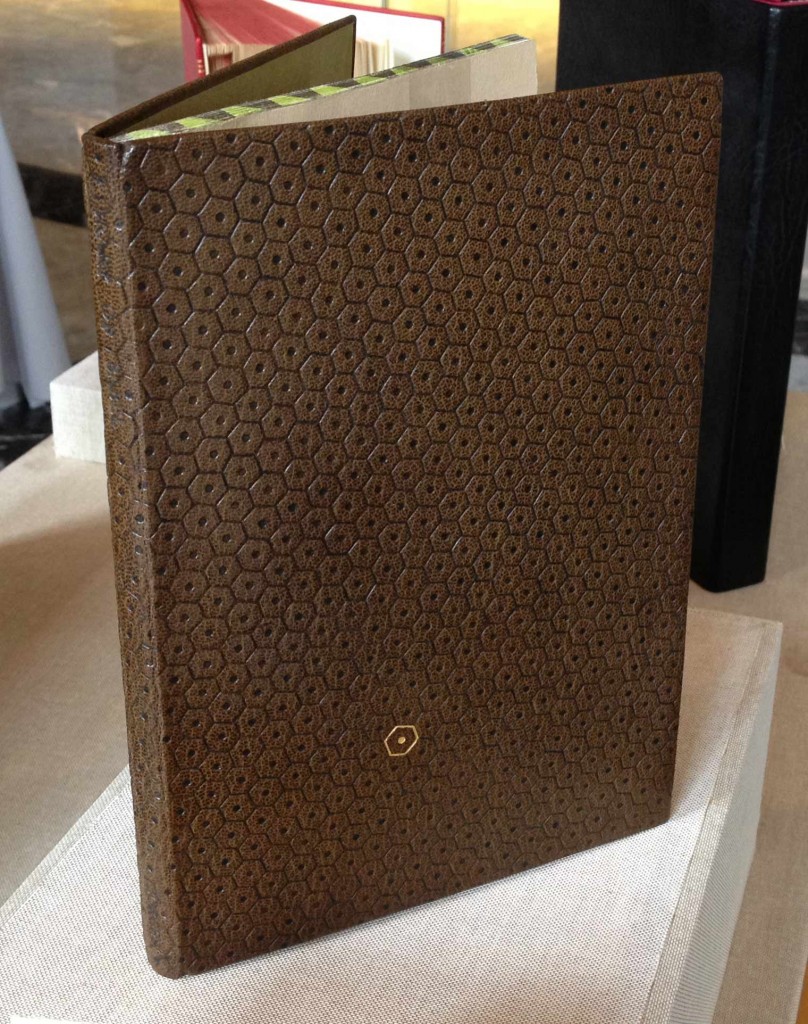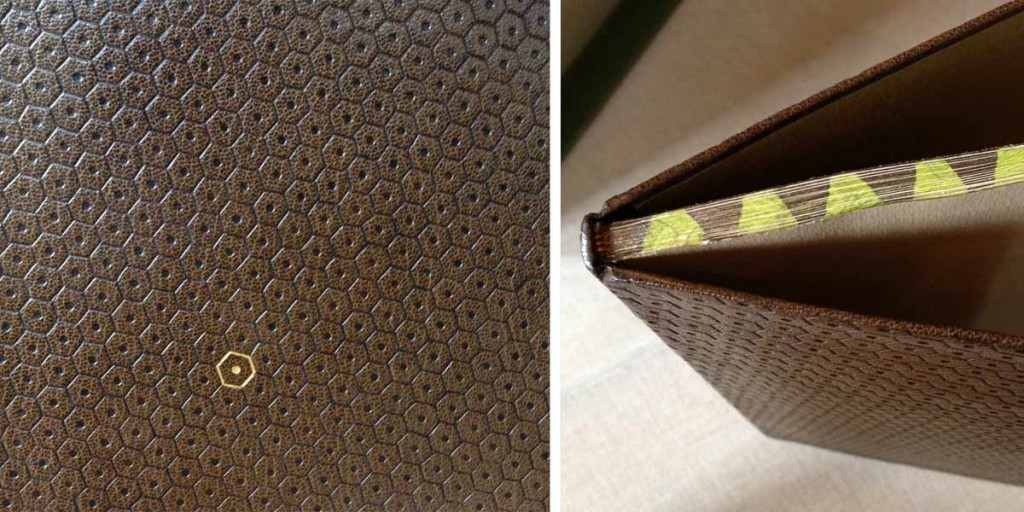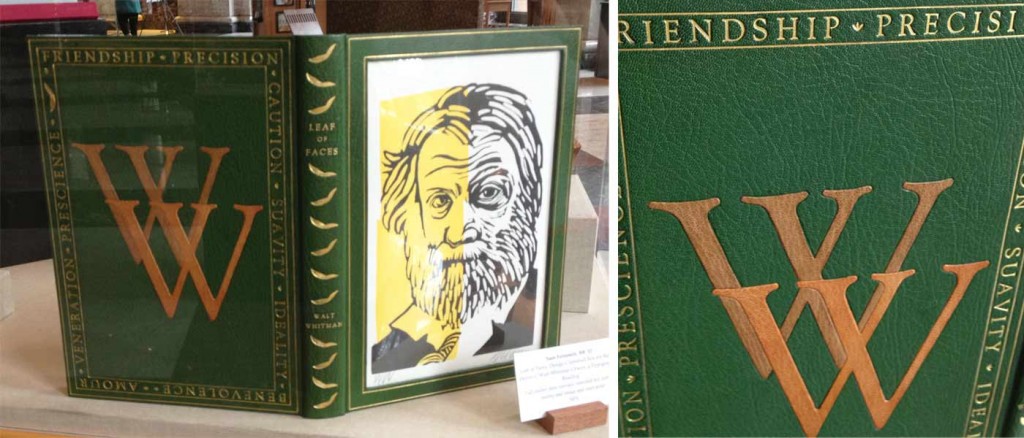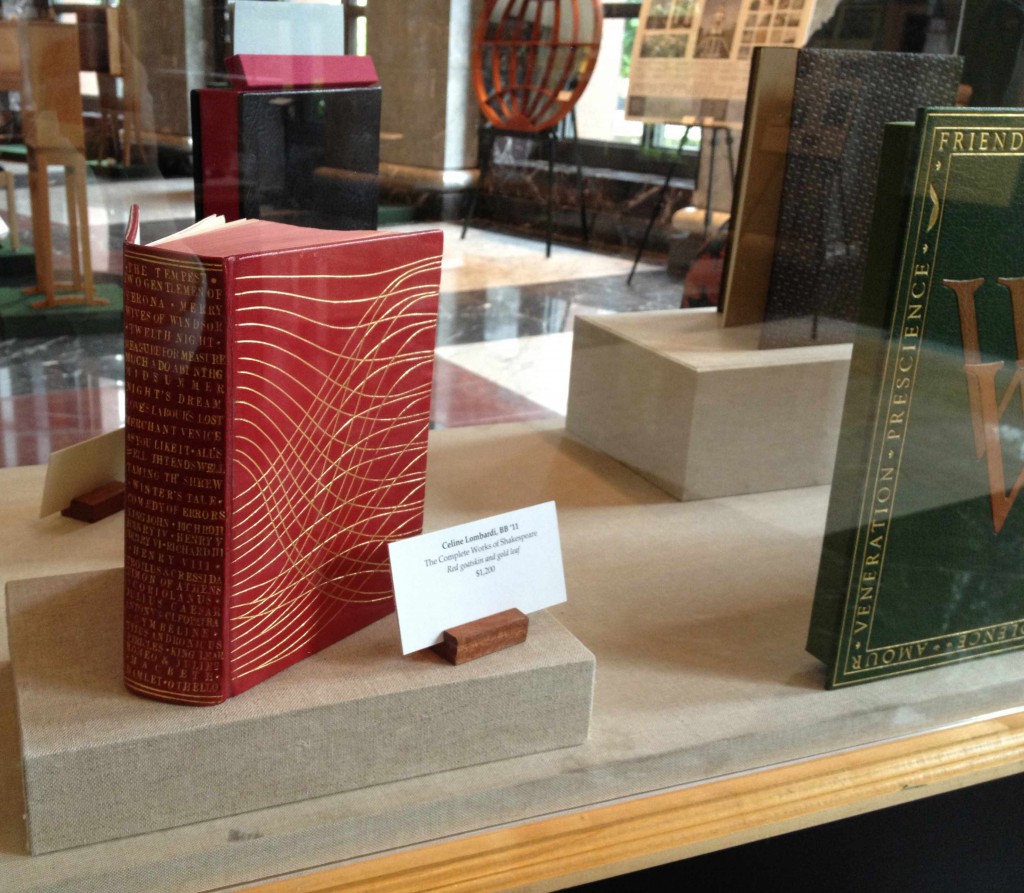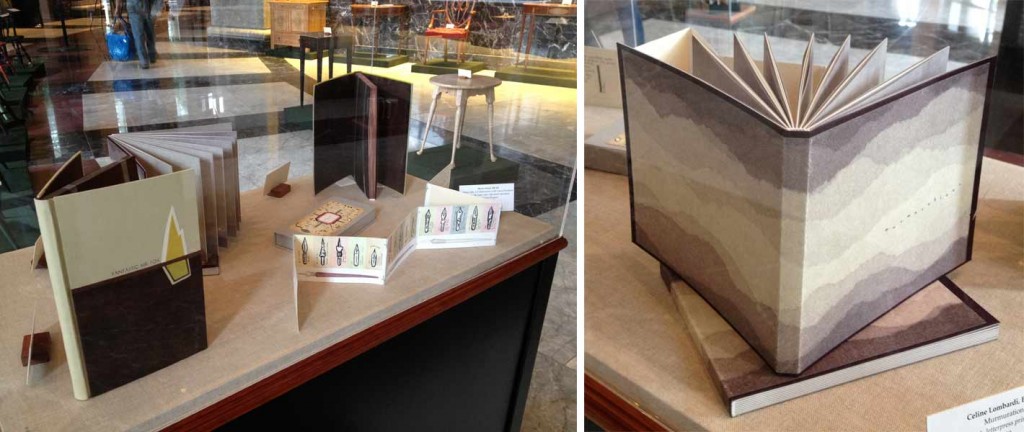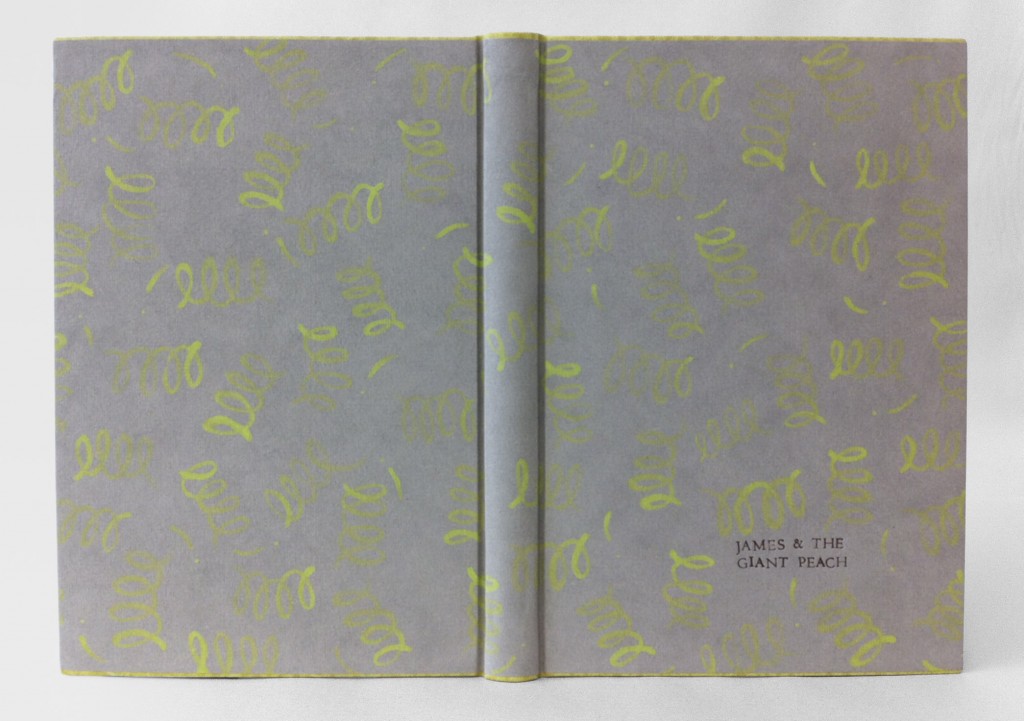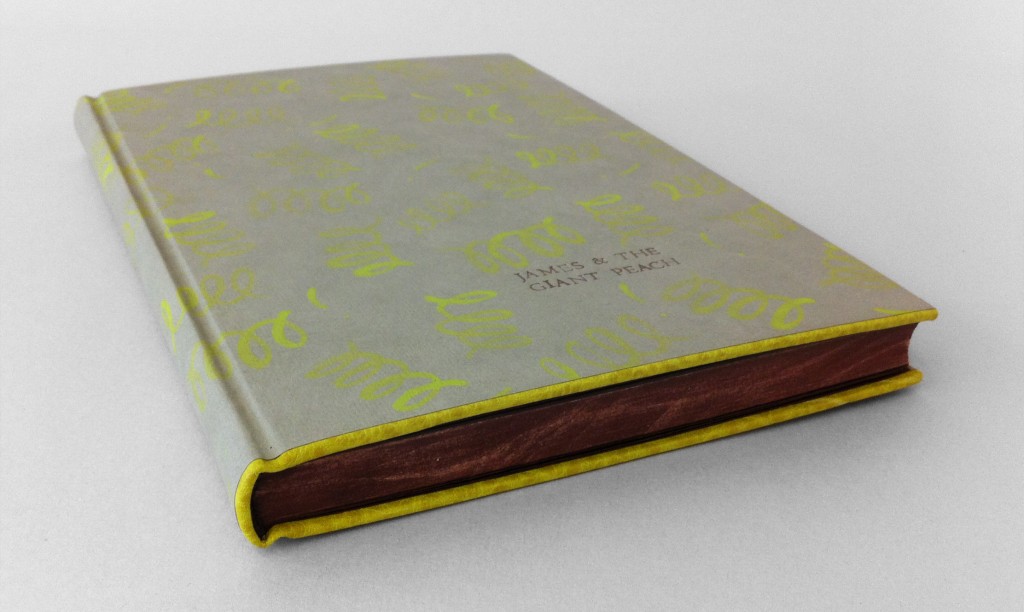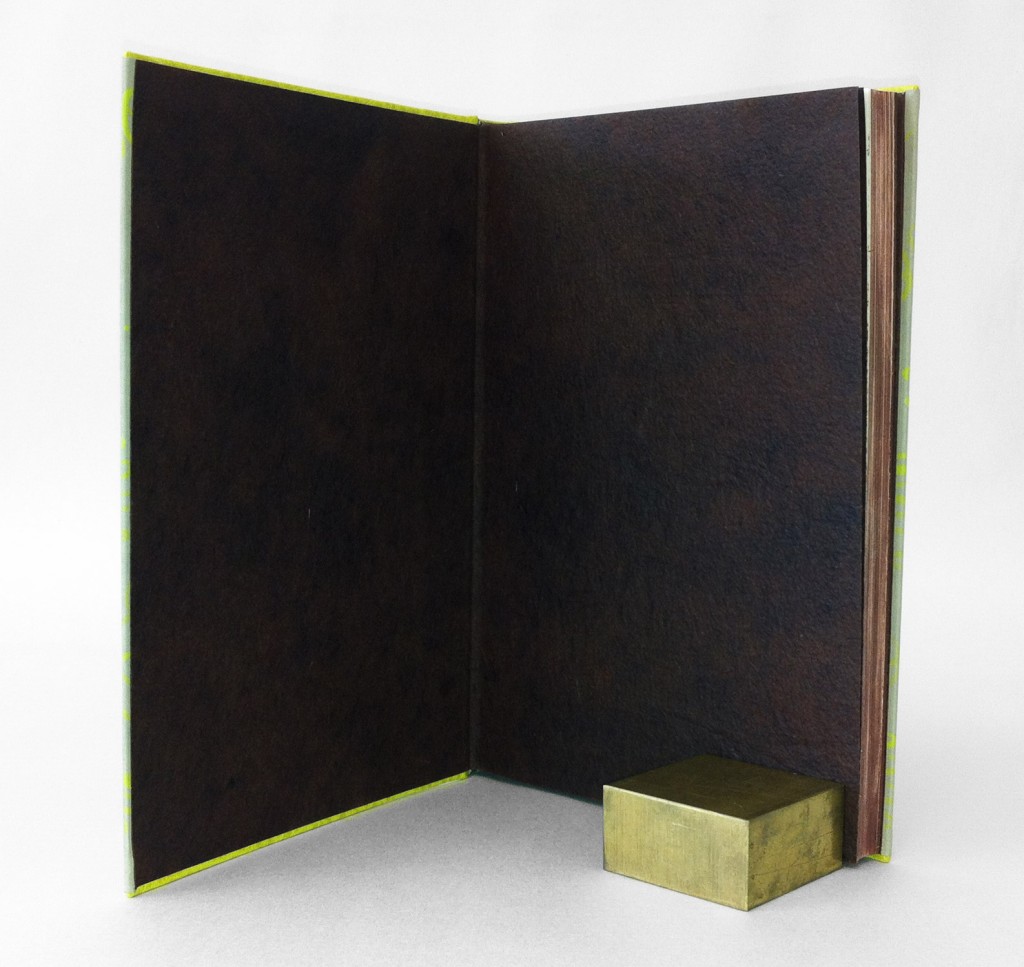At the annual Student & Alumni Exhibit for North Bennet Street School, the 2013 graduating Bookbinding class* showcased their design bindings for the set book The Periodic Table by Primo Levi. The text is largely a memoir of the years before and after Levi was transported to Auschwitz. Through a set of chapters titled after elements on the periodic table, Levi recounts his Jewish community in Italy and his life as a student and young chemist; exposing how life’s pleasures can resist and endure in the face of tyranny.
Kevin Sheby bound his edition in black goatskin with hand-dyed goatskin onlays, tooled with palladium. The title and author are also hand tooled in palladium. Edges decorated with graphite and irregularly gilt with palladium. Kevin finished off the inside covers with black goatskin doublures and sunken ebonized veneer panels.
Jeanne Goodman covered her binding in full navy blue goatskin with sunken hexagon panels on either cover displaying two illustrations from the text. Each illustration is created through the use of several decorative techniques including feathered onlays, tooling in blind and gold and surface gilding in palladium. A tooled double border in gold runs along the outer edges of the covers. All three edges are gilt in gold and the interior is finished with handmade graphite paste papers.
Bound in full black goatskin, Katrina Kiapos, accented her design binding with a minimalist, geometric design. Three onlays in shades of black and grey mirror each other from the front and back covers. Katrina hand tooled the title and author in palladium. Edges decorated with graphite and sprinkled with palladium. The interior is covered with black goatskin doublures and leather flyleaves.
Betsy Roper bound her design binding in full hand-dyed goatskin. The skin was dyed to have a mottled look, creating texture and movement. Various hexagons are placed on the front and back cover, both protruding from and sinking into the boards. Title hand tooled in blind. Edges decorated in a soft brown tone. A marbled paper accents the island paste down and flyleaf.
Avery Bazemore created a design to reflect the chapters of the book, emphasizing the section about gold with a surface gilt square onlay on the front cover. The book is bound in full grey goatskin with additional onlays in black goatskin. Title and author were hand tooled in carbon. Head edge decorated before sewing in graphite; Avery again emphasizes the chapter in gold by gilding that particular section of the text. The single line continues onto the headband and headcap. The interior is finished off with leather doublures.
Covered in full dark green goatskin, Lauren Schott created a design binding reminiscent of the Art Deco era. Hand tooled gilt lines run the height of the front cover, wrapping around the spine, board edges and back cover leaving the outline of a hexagon. The title and author were also hand tooled in gold. Edges decorated with graphite and sprinkled with gold leaf.
In addition to student work, a small handful of alumni work was also on display.
Library of Babel bound by Colin Urbina in full brown goatskin and hand tooled in a repeating hexagon pattern. A single hexagon is gilt on the front cover. Edges decorated with alternating shades of brown and chartreuse green.
A full leather rounded spine clamshell box from Samuel Feinstein. The front cover has a built-in window to house a printed portrait of Walt Whitman in addition to a gold tooled border along the frame.
The Complete Works of Shakespeare bound by Celine Lombardi in full red goatskin. Titling and cover design hand tooled in gold. Each title on the spine is linked to a tab on the foredge of the text block through a corresponding gilt line.
There are four great pieces on display in this case. On either corner are two of my bindings: Fantastic Mr. Fox and James and the Giant Peach. Last year, Marie Oedel paired up with book artist Laura Davidson (whom I interviewed on my blog in April) to make custom boxes for her book Every Nib. Lastly, is Celine Lombardi’s Murmurations, a small edition printed and bound during her year long fellowship at The Center for Book Arts in New York.
* Nancy Baker’s set book was taken from the exhibit before I could photograph it for this blog post.
